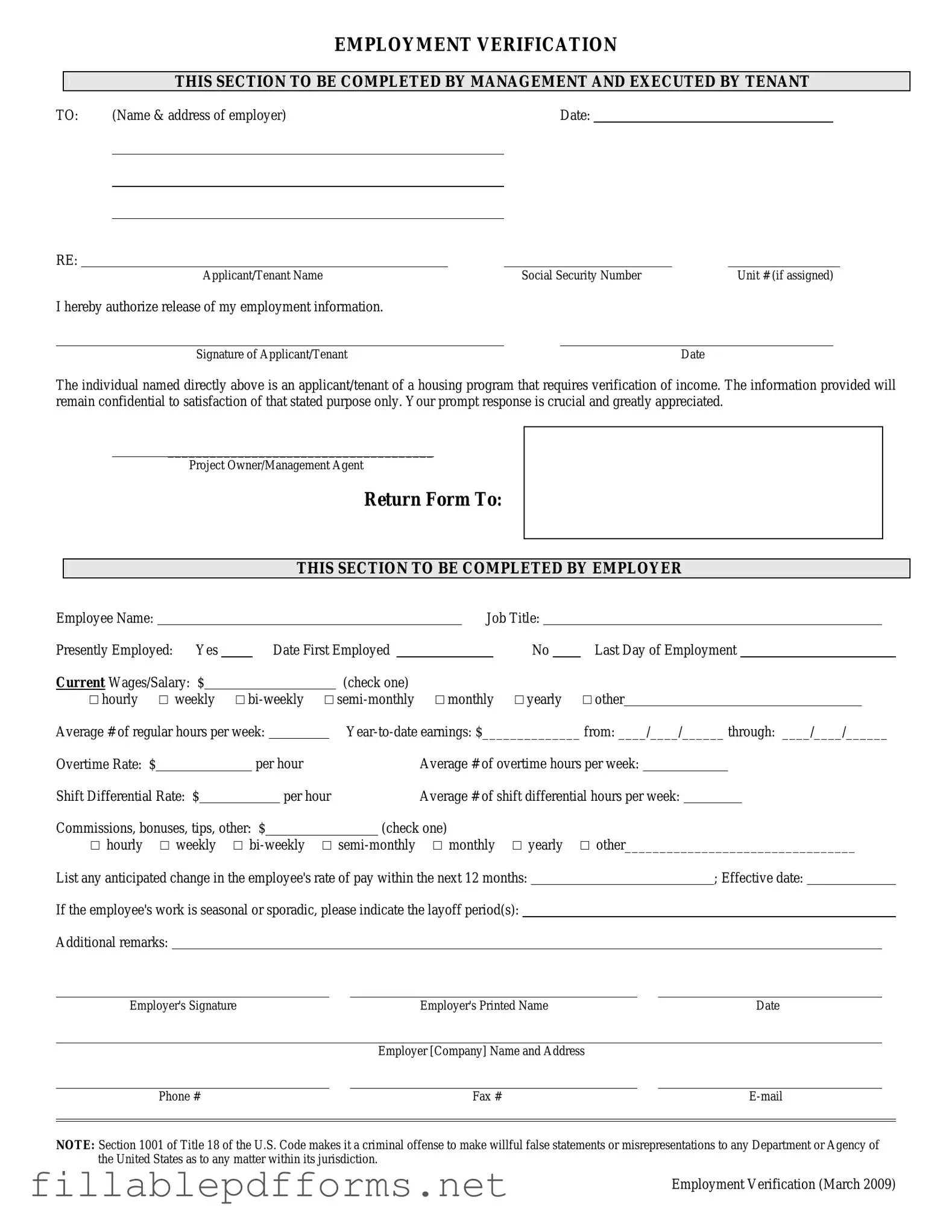Employment verification form PDF Template
The Employment Verification Form is a document used by employers to confirm a job applicant's employment history, including details such as job title, dates of employment, and salary. This form plays a crucial role in the hiring process, helping employers ensure they make informed decisions based on accurate information. Understanding its purpose and how it is utilized can benefit both job seekers and employers alike.
Launch Editor Here
